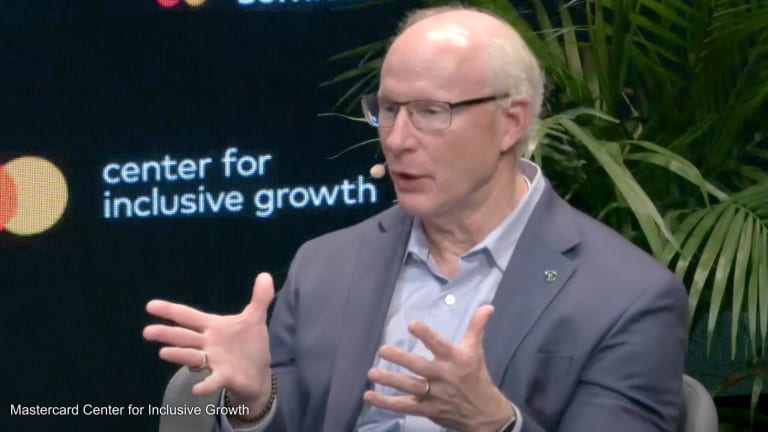
Lives and livelihoods are at stake. With one-third of their population living less than 5 meters (16 feet) above sea level, the climate crisis poses an existential risk to small island developing states, or SIDS. This is particularly unfair; these island states contribute less than 1% to the world’s greenhouse gas emissions, while facing far greater risks to their economies, livelihoods, and food security.
Though countries around the world need to make every effort to mitigate the impacts of a changing climate, infrastructure’s role in climate change adaptation is key to a resilient future for SIDS and deserves far more attention than it currently receives.
Infrastructure is vital to the SIDS’ battle for survival, as rising sea levels and extreme weather devastate these nations time after time. Get infrastructure right, and SIDS can withstand these environmental challenges and reap the development benefits in the long term. Continue to ignore the need for sustainable, resilient, and inclusive infrastructure, and the future of these nations could be very bleak.
Sadly, we have already seen the scale of the damage that a changing climate inflicts far too many times.
In September 2017, Hurricane Irma, a Category 5 storm, left a trail of destruction across the Caribbean, displacing over 1.7 million people, including in Cuba, the Dominican Republic, Haiti, and Antigua and Barbuda.
On the island of Barbuda, 90% of all infrastructure was destroyed, leaving approximately 50% of the population homeless. And the hurricane left two-thirds of homes on the island of St. Martin uninhabitable, with no electricity, gas, or drinking water.
With limited resources and mounting needs, it is crucial that investment in infrastructure systems yields long-term development gains for all.
—The environmental challenges are further complicated by the SIDS’ small size and their remoteness. Many SIDS are not only small but are themselves made up of several small islands. This leads to limited resources, food insecurity, and dependence on imports. It also means a narrow range of exports, as well as a lack of competition and economies of scale. According to the Food and Agriculture Organization, all Caribbean and Pacific SIDS import over 60% of their food; half of the islands import over 80%.
The distance from other countries and major shipping routes and networks poses an additional challenge of complicated logistics. The average Pacific island country is 11,500 kilometers away from any other country. Poor connectivity of people and freight impacts international trade and productivity, limiting SIDS’ ability to become a significant part of the global supply chain.
The COVID-19 pandemic has further complicated these challenges, threatening lives and disrupting their tourism-dependent economies.
But while these nations face a unique set of challenges in these uncertain times, innovative infrastructure solutions offer a way forward, helping them progress toward the 2030 Agenda for Sustainable Development and meet the impacts of climate change.
Consider transport infrastructure, key to trade and mobility within islands, as well as externally. Flights and cruises are crucial for tourism activities, which account for up to 50% of SIDS’ gross domestic product.
While climate risk impacts almost all aspects of life in SIDS, transport infrastructure is disproportionately affected, resulting in massive economic losses. And that damage to infrastructure then touches every aspect of life, creating shortages from food and medicine to fuel for cooking and electricity.
To adapt to these challenges, it is key for countries to focus on and use hazard risk mapping when planning their transport infrastructure or upgrading existing infrastructure to make them more resilient to natural hazards.
More resilient transport infrastructure will also make it easier to move large numbers to safety, and deliver relief items when disaster hits. Coastal protection measures can safeguard airports, seaports, and roads from sea level rise and storm surges.
In addition, more sustainable transport infrastructure will help protect the unique natural environments that attract tourism and support SIDS economies. Inclusive transport infrastructure will also ensure equal access to the other critical services and opportunities that investment in infrastructure brings.
All of this requires careful planning that takes into account the interdependent nature of our infrastructure systems and their relationship with the natural environment. Planning that carefully considers SIDS’ particular contexts, vulnerabilities, and needs, as well as international best practices. And planning that carefully maps disaster risks, identifies critical assets, and upholds international best practices. Interisland cooperation will be key.
In Curaçao, for example, the United Nations Office for Project Services — the infrastructure and procurement specialists of the U.N. — worked with the government to enhance road transportation. We assessed road infrastructure systems and analyzed the risks they face. Based on these, we provided recommendations for road system design and for planning to make the system more resilient to future shocks and avoid the high costs of infrastructure reconstruction and rehabilitation.
Infrastructure projects are costly and long-lasting. What we build today needs to work for both present and future generations. With limited resources and mounting needs, it is crucial that investment in infrastructure systems yields long-term development gains for all.
Sustainable, resilient, and inclusive infrastructure is key to SIDS’ efforts to respond to their unique challenges, deliver on the Sustainable Development Goals, and build a better future for their communities. The time to plan this is now or never.
Visit the Turning the Tide series for more coverage on climate change, resilience building, and innovative solutions in small island developing states. You can join the conversation using the hashtag #TurningtheTide.









